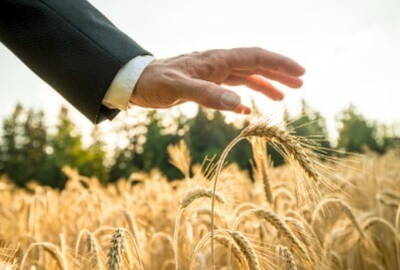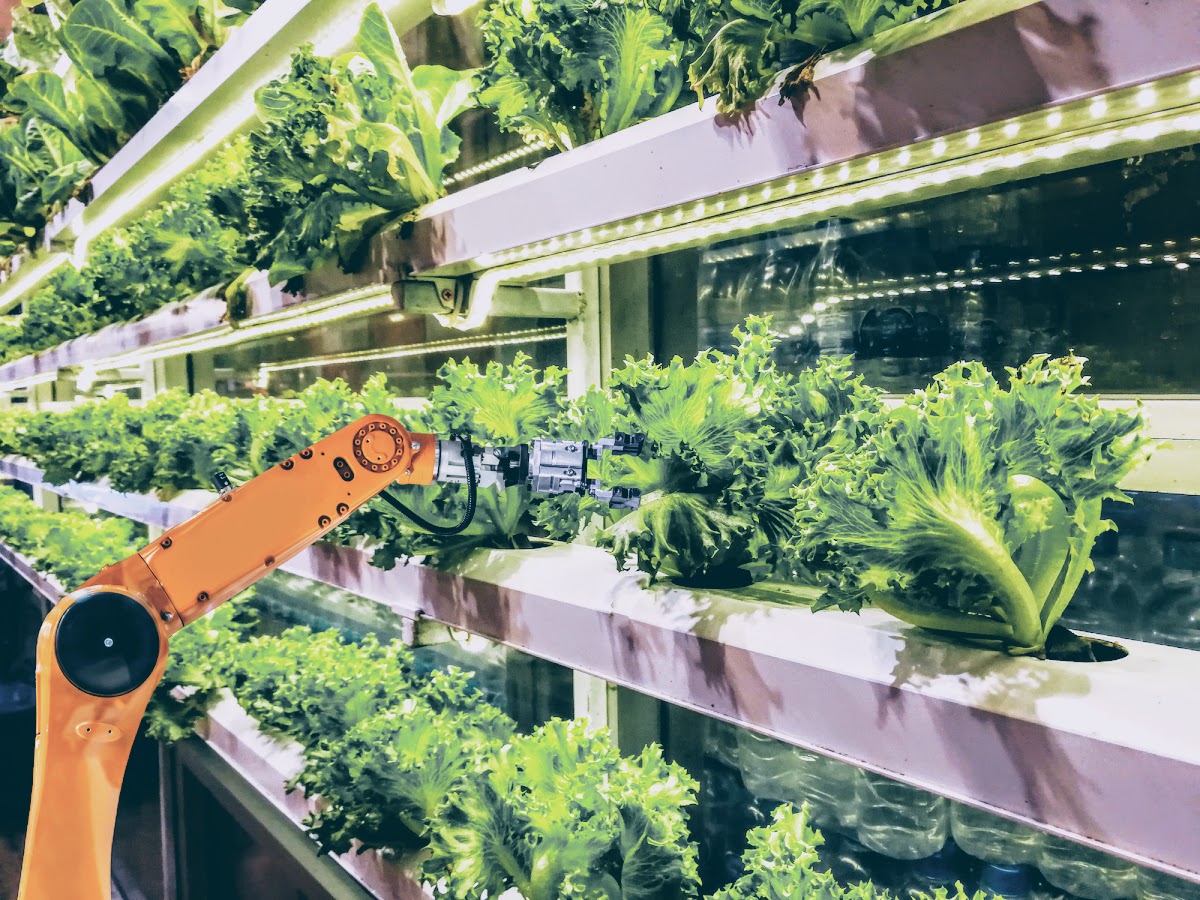Agriculture is an important industry that not only provides millions of jobs across the world, but is essential in order to feed a 7.9 billion+ population. However, it is not without its problems. The ever-increasing global population and climate change are issues that require evolution of the agricultural landscape. Sustainable farming and increased output have become priorities and the technological advancements in agriculture reflect this.
In 2020 alone, UKRI invested £24 million into innovative agri-tech projects including those that dealt with vertical farming, robotics, and more. This article discusses the advancements in farming changing the agricultural landscape.
Artificial Intelligence (AI) and Automation
One of the most popular uses of artificial intelligence (AI) in agriculture is in self-driving vehicles such as tractors and seeders. These tackle two major problems – labour shortages and time constraints. Whilst machines focus on manual labour such as orchard management, farmers are left free to focus on business, strategizing and other responsibilities. This is also a game-changer when it comes to busy times like the harvest season and allows farms to maximise both yield and efficiency.
AI in agriculture also includes remote sensors, UAVs and satellites that can gather a vast amount of information 24 hours a day. In addition to monitoring plant health, temperature, soil, and humidity, remote sensors are now also being used to keep track of the location and health of farm animals and livestock. The data gathered can be used to aid in decision-making and improving harvests.
Vertical Farming
With urbanisation and population growth, there is less land available for farming. Over the past 40 years, the earth has lost one-third of arable land. Vertical farming and the technology it uses may be a solution to this problem.
Vertical farming involves growing crops in vertically stacked layers or inclines and results in more crops grown in less space. Some setups don’t even require soil; and are either hydroponic or aeroponic. The use of greenhouse settings and artificial grow lights instead of sunlight allows crops to flourish despite the environment.
This allows for food growth in urban environments and cities and can be used to make better use of arable land as well. Additionally, it allows farmers to grow crops year-round, even if they’re not suitable for the location, and cuts down distance in the supply chain. Vertical farms also use much less energy and water. In fact, when compared to traditional farms, they use up to 70% less water. The use of robotics in planting and harvesting also makes sure this isn’t labour-intensive.
Drones
Drones have a number of uses in agriculture, including supplementing bees in their efforts to pollinate crops and in automated harvesting. They’re also used to apply insecticide to specific areas and eliminate chemical exposure to workers.
However, they are most commonly known for collecting large amounts of data, including plant height, water saturation, weed presence, crop biomass, and more. In addition to delivering highly accurate data, drones also secure data in a higher resolution (as compared to satellites) and are easy to use.
High-Flex Tyres
Larger farming equipment can cover more ground and assist farmers. However, the weight also leads to soil compaction and has a negative effect on crop yields. Technology like high-flex tyres can provide a solution by transferring the weight across a larger area. Today’s high-flex tyres like flexion, very high flexion and radial plus tyres can be run at 20-40% less pressure than traditional tyres and can solve this issue.
RFID Technology
Radio frequency identification (FRID) technology has been used to identify animals but is now also being expanded to crops. This technology uses radio waves to capture information on an object. This includes information such as date, time and location, with RFID being able to hold up to 2KB of data. This can be used to track harvesting, storage, and packaging, and makes crops more traceable.
Minichromosomal Technology
Minichromosomes are cell structures that include small amounts of genetic material but hold a lot of information. Genetic engineers have used these to add or enhance the genetic traits of crops including resistance to droughts and additional nutritional value. However, despite the ability to add traits to plants, the original chromosomes remain the same. This makes the technology different from other genetically modified foods and more likely to be accepted by consumers and regulators alike.
Blockchain Technology
Despite being known for its role in cryptocurrencies, blockchain technology has a lot of uses in other industries, including agriculture. By using blockchain, the agricultural industry can keep track of crops all the way from harvesting to delivery, including crops belonging to specific farmers. Because of the availability of an accurate ledger, everything can be tracked in real-time. Issues like safety recalls, food fraud, and missing foods can be rectified.
Because of blockchain’s decentralised structure, the supply chain will be transparent and traceable. If there’s a foodborne disease or contamination, it can be easily tracked down to its source. Ownership can be clarified at any point. Food journeys will be made more secure since they will be monitored in real-time. Blockchain technology can also help regulate market pricing by creating a more thorough picture of demand and supply. Additionally, it can be used for resource management, including keeping track of equipment, sensors, machinery, and more.
Biologicals
With the rise of sustainable agriculture and environmentally friendly growth practices, farmers have been looking for greener and more cost-efficient methods and products. Biologicals are a huge part of this since they include everything from fertilisers and seed treatments to biofungicides and biopesticides.
Precision Agriculture
Precision agriculture allows farmers to control every variable of farming, including moisture levels, soil conditions, micro-climates, pest stress, and more. By improving planting and growing techniques and ensuring the soil and crops have their needs met exactly, precision agriculture allows for optimum health and leads to increased efficiency and higher yields.
Agricultural Innovation and Farming Jobs
With so much innovation in agriculture, it’s easy to see why agricultural jobs are so popular. If you’re interested in a career in agriculture, look no further than Agricultural Recruitment Specialists. Whether you’re looking for a job or want to discuss your career options, you can contact us here.
If you’re looking to fill an agricultural position, we’ve got you covered as well. Whether you’re looking for a trainee or a specialist, we can help. Check out our professional recruitment services here or contact us here. No matter the job, we can find the person best suited for it. It's our aim to find you to most perfect candidate for the job.












